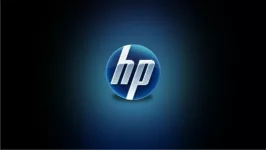Printing is in decline at the moment, and when you are in a market decline for a class of product, you are generally given a choice. Either exit the segment or double down on it and expand the market, which, if successful, will eventually result in you being in the market and in a better position to either pivot that market or reverse the decline. This approach is the path that HP is on, and as the market adjusts to the post-COVID world, HP reported quarter over quarter growth ranging from 28% to 64%, depending on the segment.
Years ago, when faced with the same decision on Mainframes, I watched IBM decide to pivot to Client-Server prematurely, giving Sun Microsystems a significant portion of their market and almost failing. IBM eventually reversed their decision, and today the Mainframe remains one of their most profitable offerings, and they are now nearly the only company still selling this platform. HP learned from IBM’s initial mistake and moved aggressively to consolidate the printer industry around HP, and, today, they dominate Printing.
To showcase how long it takes technology, even a primarily abandoned one, HP reports their customers are still Faxing 1M pages a month even though Fax Machines were deemed obsolete back in the 1990s, having been replaced by email.
Their approach to market recovery has three primary elements. The redesign focuses on building printers for today’s needs, Printing as a service, and a massive focus on sustainability to offset the printers’ environmental footprint. The Power Of Print event focused on these capabilities. It showcased a best practice in extending a declining market until a workable pivot can be identified or advancement can reverse the decline.
Let’s take each in turn.
Building Printers For Today’s Needs
HP went into a redesign effort that cut across their lines and most recently focused on printers that would better fit in with employees working from home. The HP OfficeJet pro was for those who work from home regardless of company size. This product line had self-healing features that would assure it worked in homes that generally lack IT support, and its users could interact with the printer using the HP Smart App.
The enterprise-class workers have 400 Enterprise and 500 Enterprise-class printers, representing a 50% lower price and 40% smaller footprint than their predecessors. This series uses the Vision printing system, the most connected, accessible, and secure printing ecosystem globally.
For those that want a laser printer, they have the LaserJet 200. While laser printers are often seen as high energy users thanks to their fixing element, which uses heat, HP could lower that footprint by 25%, reducing the size of the printer so it would work better in homes by 40%. HP represents this printer is the fastest double-sided printer
Finally, for those printed in high volumes they created the Neverstop print line that uses reservoirs rather than print cartridges. These reservoir based printers are more expensive but lower significantly the cost of each printed page.
Printing As A Service
HP has been shifting their model to use web services to shift their retail model to a subscription service. The first implementation is called HP Instant Ink, and it has, according to HP, been prevalent, reporting 8M current users of this service. This service starts at $1.99 a month for toner and $1.99 for Ink. And buyers of new printers qualify for a six month free trial of Instant Ink. This service assures users never run out of Ink and, I expect, this service will eventually expand to cover paper. Information on these offerings can be found here.
Sustainability
HP is one of the most aggressive technology vendors when it comes to sustainability and their Instant Ink. This service comes with prepaid return envelopes for recycling ink cartridges. Paper can be recycled, but plastics require special treatment, and most landfills are not set up to handle them, but HP has contracted out to recycle both.
HP, to date, has consumed 1.7M pounds of ocean-bound plastics. They have achieved zero deforestation associated with HP brand paper. They have a goal to eliminate 75% of single-use plastics in packaging by 2025. The company is currently ranked as the #1 most responsible company in America. It has earned the partner of the year award for 2020 in sustained excellence. It is on the CDP A-List for sustainability, and it is a member of the Dow Jones sustainability index. The company takes sustainability very seriously. References to these awards can be found here.
Wrapping Up:
To fight the decline of Printing to gain the time to pivot, the personal printing industry HP has gone through a series of transitions. These transitions include a focus on design for the new work from home every day, developing a print as a service model that is still evolving, and a massive effort to become the most responsible company in America.
This progress should give them time to discover what is coming next, and their efforts in 3D Printing represent just part of that effort. For there is one thing for sure, HP is assuring that even if Printing eventually ends, HP won’t and will be one of the leaders for the eventual pivot away from printing in a decade or so.







